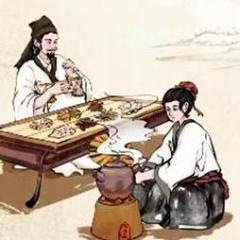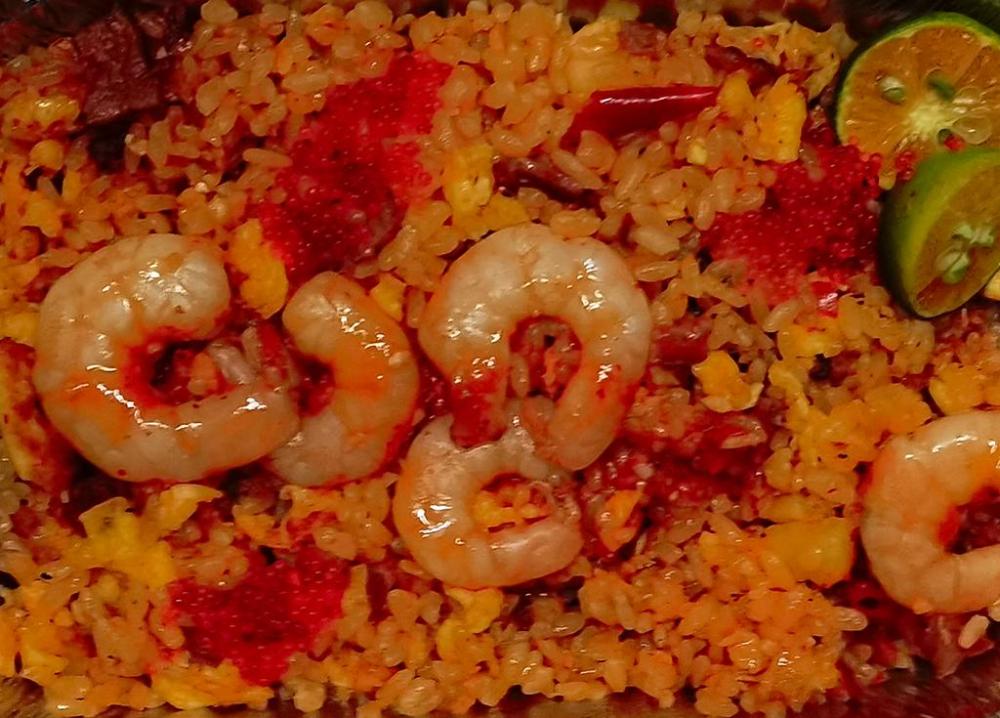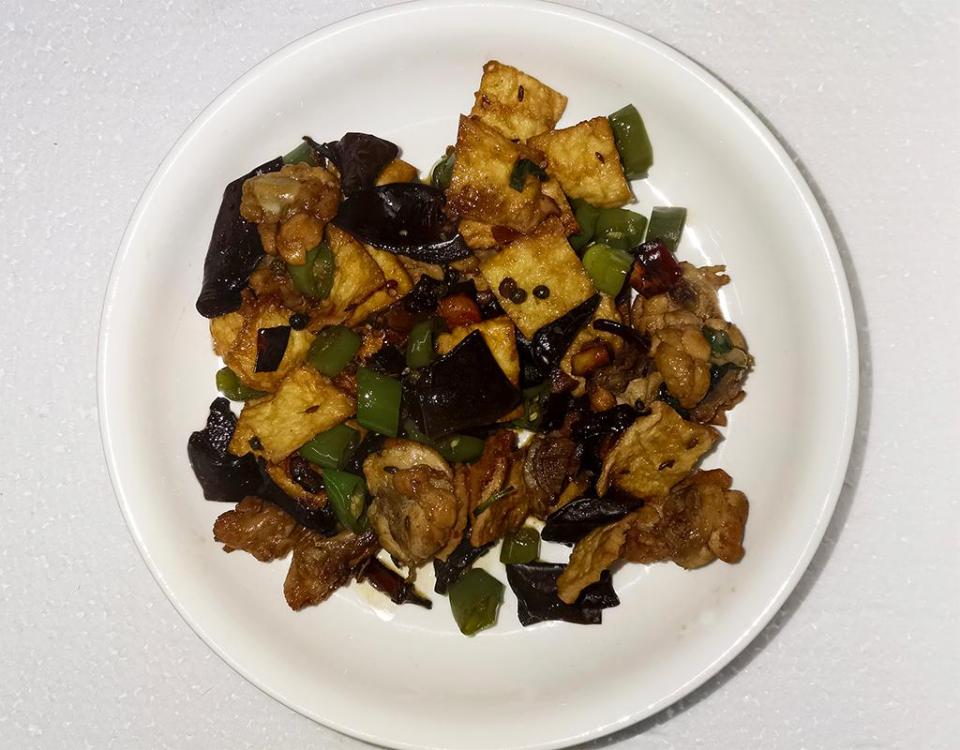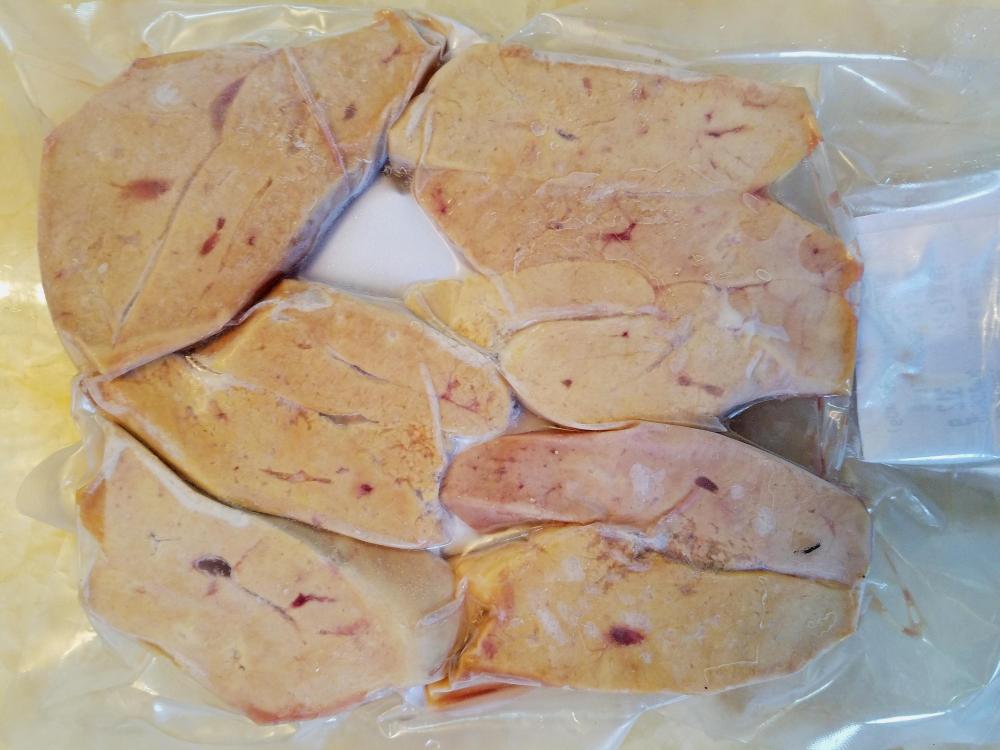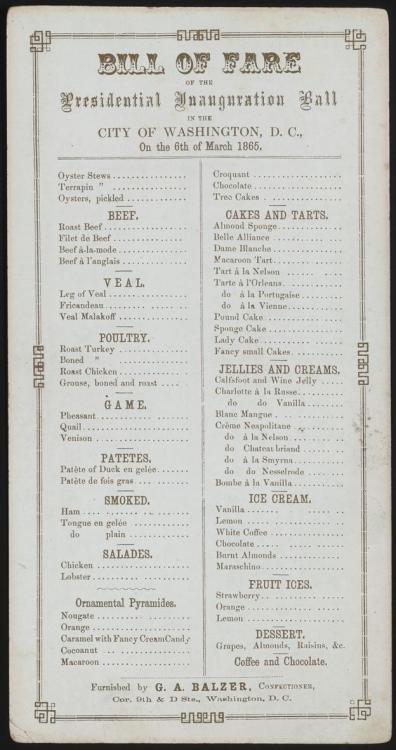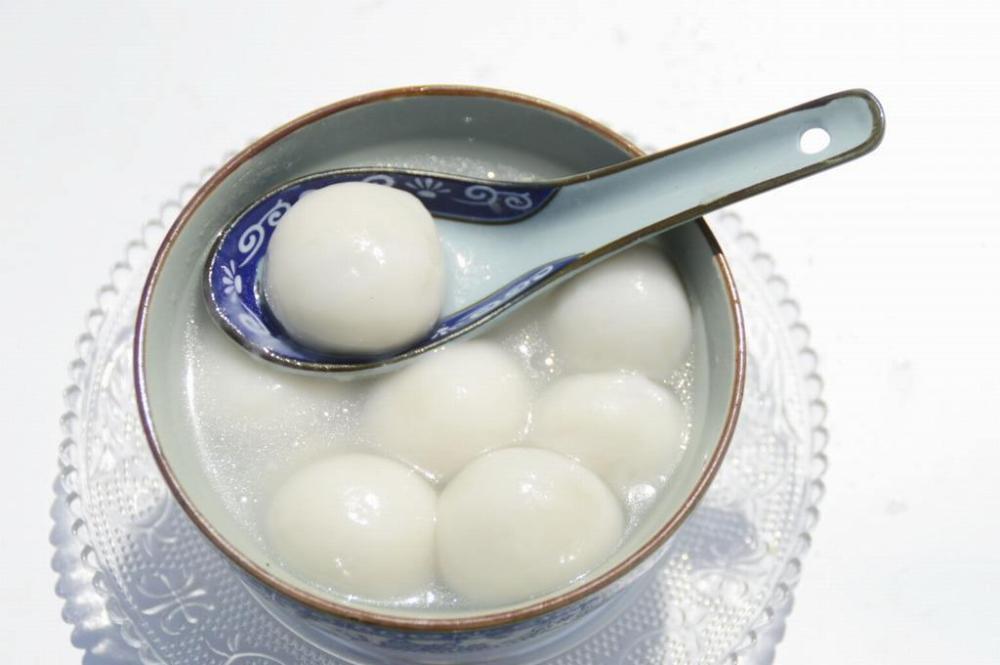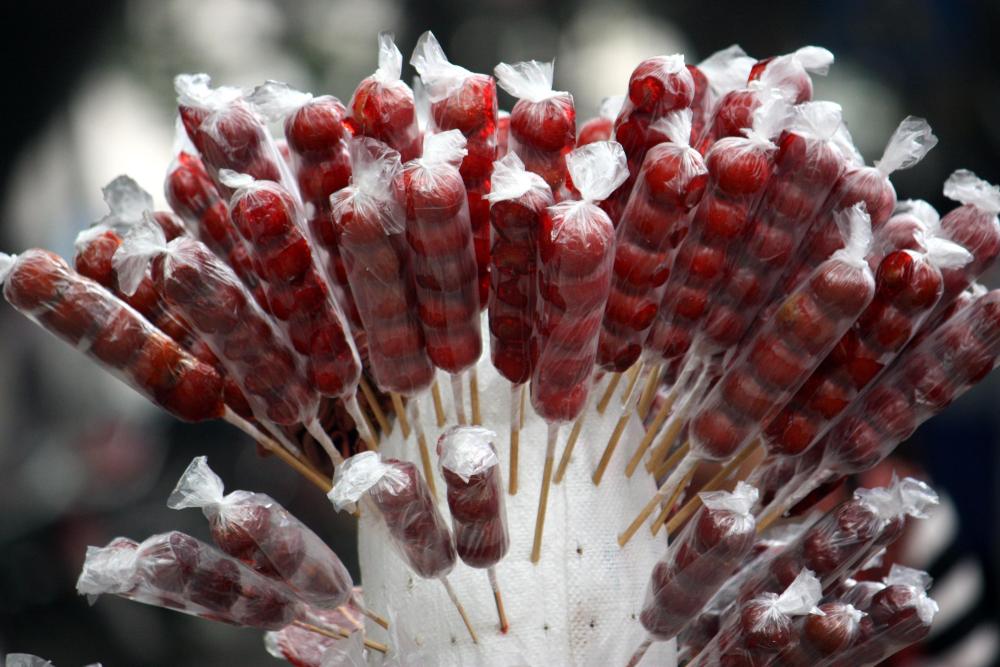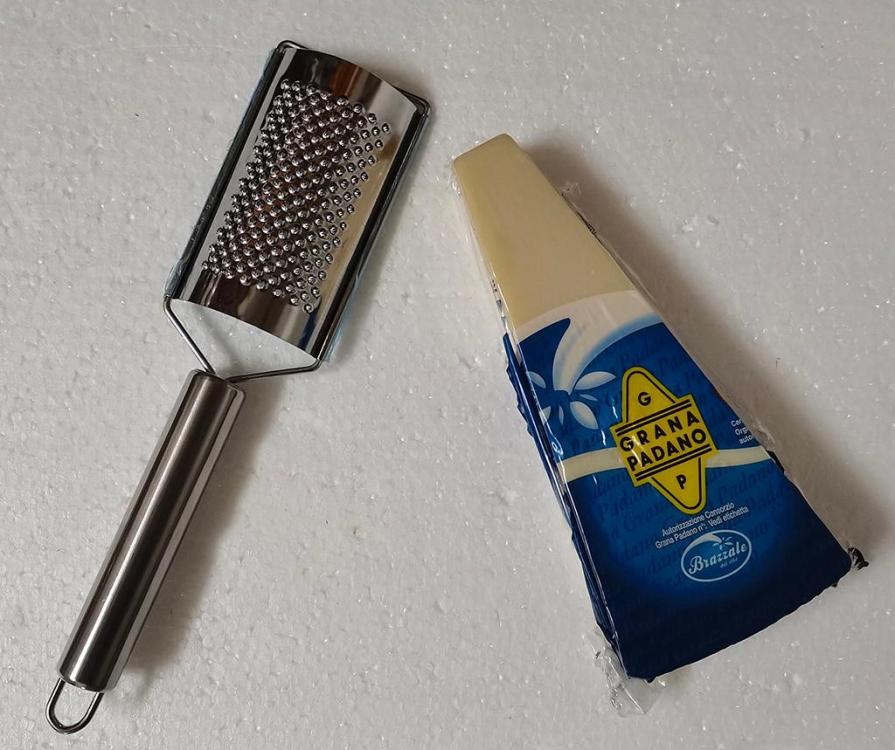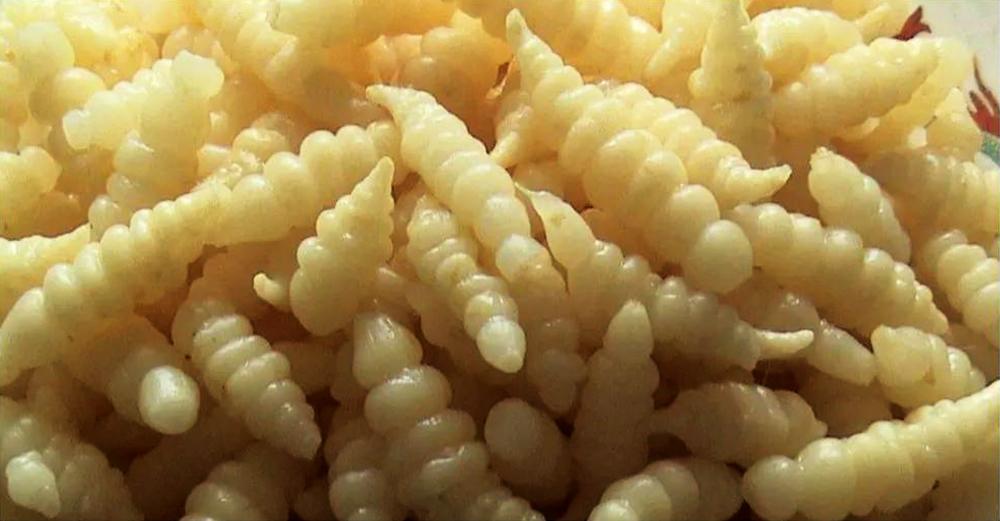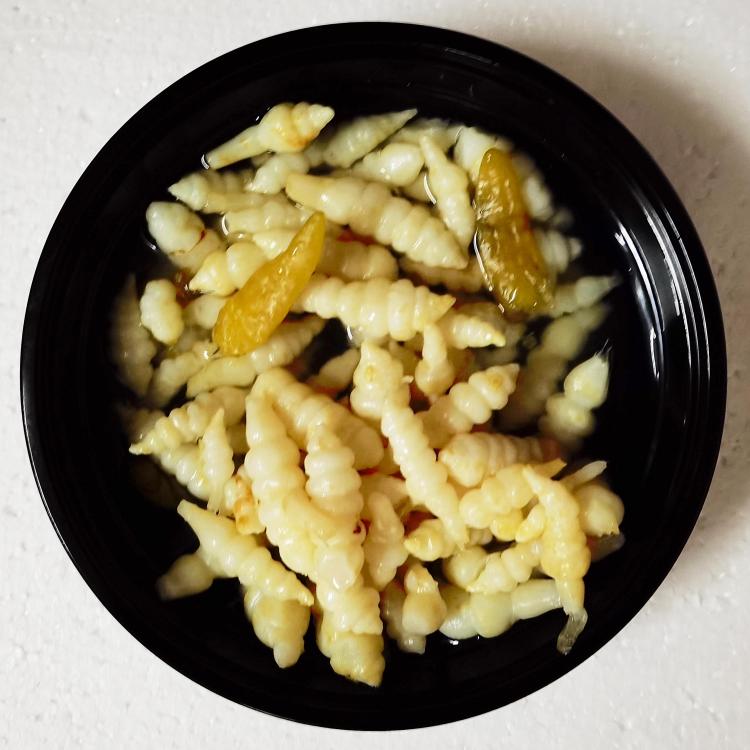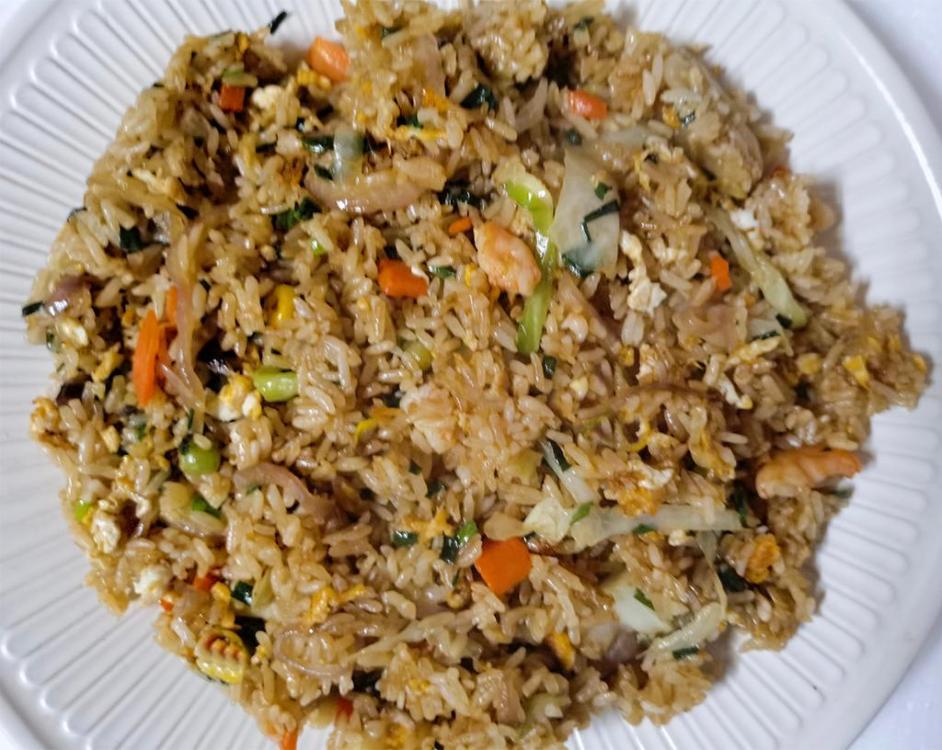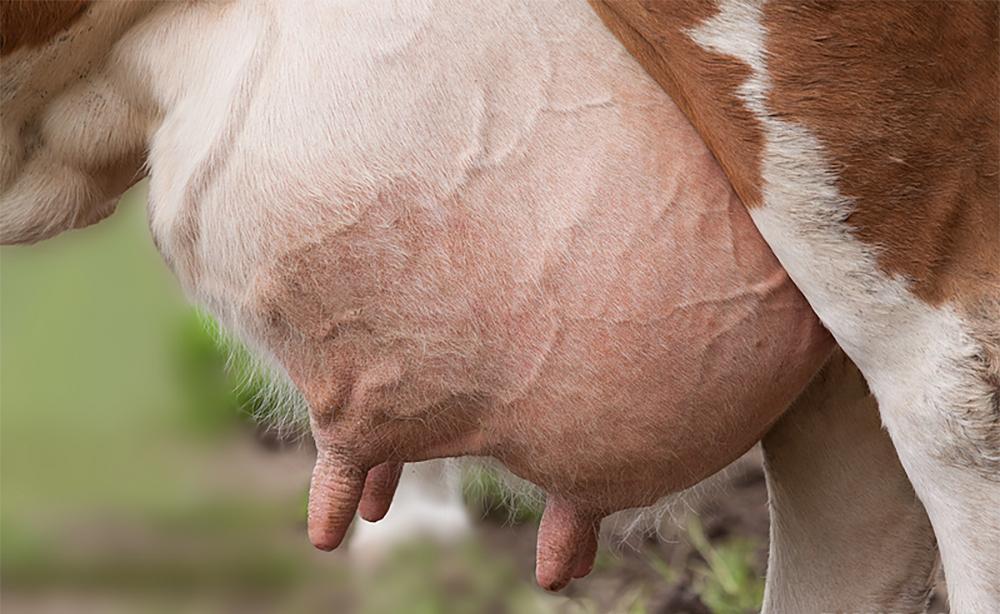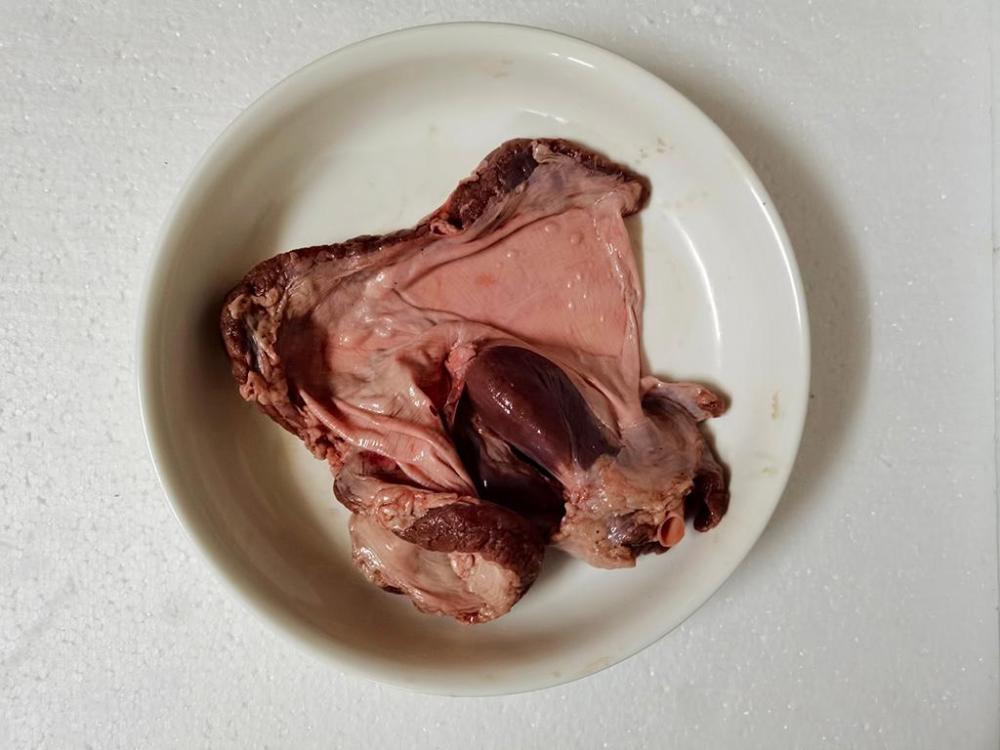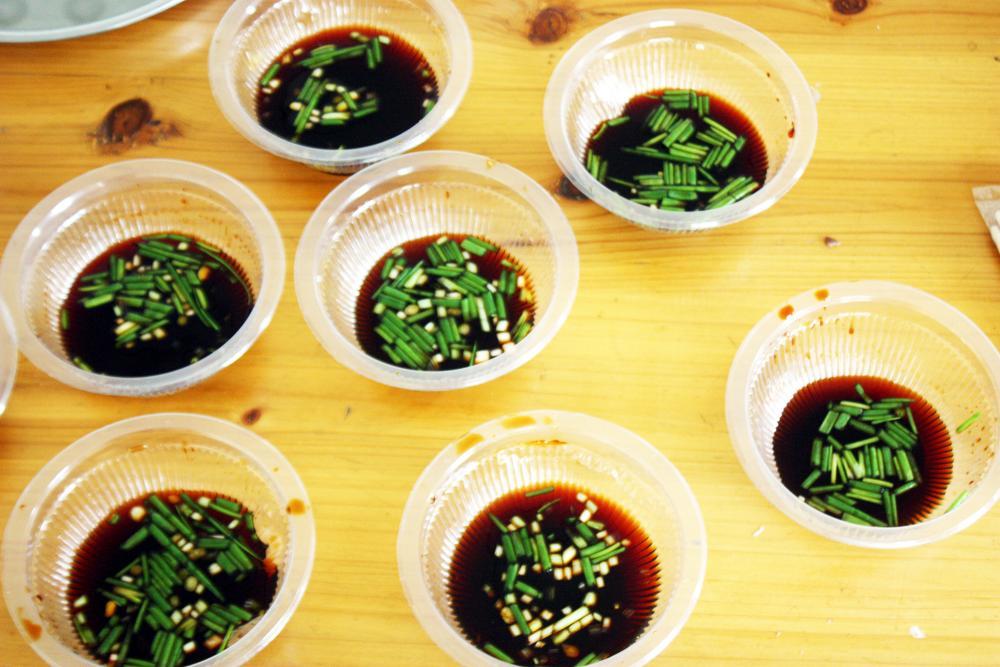-
Posts
16,675 -
Joined
-
Last visited
Content Type
Profiles
Forums
Store
Help Articles
Everything posted by liuzhou
-
蟹籽虾仁炒饭 (xiè zǐ xiā rén chǎo fàn), crab roe and shrimp fried rice. Includes egg and 腊肠 (là cháng) Chinese sausage, plus chilli (lots).
-
I should say that although they are very popular in Beijing, it is Xi'an that is noted for them at the Lantern Festival. Of course, this is partly because the haws resemble lanterns. I get them here, too.
-
I'm not trying to say or even imply that there is anything wrong with baked baozi. I'm just saying they don't exist here. I'd certainly try if I came across them.
-
It was the baking that surprised me. As I think you know, extremely few people have ovens at home and even most restaurants don't. One of my local steamed bread places has about 30 varieties of baozi. I need to have a look to see if they do a chicken version with or without shiitake.
-
It's never done any other way here. The standard definition of baozi is "steamed filled buns". Never had baked ones. Chicken and shiitake is a common pairing, but I don't recall seeing it in baozi. Interesting.
-
Etymologically uncertain, other than ‘sweetbread’ being a compound of 'sweet' and 'bread', the term has been in use in English since the 16th century. There is a suggestion that it may be that ’sweet’ is referring to a taste less robust than muscle meat and that ‘bread’ is a figurative use, meaning ‘food’. I don’t entirely buy that theory. On French menus, they are ris de veau (veal) or ris d’agneau and are highly valued. Image: https://zhuanlan.zhihu.com/p/424407822 To add to the confusion, the name refers to two distinct parts of the animal: the thymus gland and the pancreas. Then just as you are beginning to accept that, the thymus is further subdivided into throat and heart thymus, two parts of the same gland. The heart thymus is the most sought after. Soft, rich and creamy, the sweet breads are less offal-y than other parts. Usually fried, they are usually sourced from calves or lambs, but beef and pig sweetbreads are also sold, but less desirable. Like other offal, they should be well cleaned and soaked for several hours to remove any blood, They are then simmered until tender then sliced and trimmed of any connective tissues etc. They are often sold pre-soaked. Ask your friendly butcher. Here is a recipe from Michelin starred Sean Hill. Surprisingly, China doesn’t eat these. My English - Chinese food dictionary dismisses 胸腺 (xiōng xiàn), thymus as being ‘regarded as a delicacy in the West’ and ignores pancreas entirely. Their loss.
-
藤椒鸡饭 (téng jiāo jī fàn*) or 花椒鸡饭 (huā jiāo jī fàn), Sichuan pepper chicken (with rice). On-the-bone chopped chicken leg with aforementioned Sichuan peppercorns, green chilli pepper, woodear fungus, tofu skin, garlic, ginger, Shaoxing wine and soy sauce. Served with rice. * Rattan pepper or vine pepper, alternative names for Sichuan peppercorns.
-
There is. There is non-gavage foie gras. I am having difficulty accessing websites outside China right now, but a Google search for 'non-gavage foie gras' will probably clarify. Here is one article about non-gavage foie gras production in Spain. I also remember reading a lot in French like this one. The problem is that the production capacity of non-gavage foie gras is still much lower than the demand (and that will probably make it more expensive than it already is where it is sold). Beware the idiots marketing vegetable based alternatives, sometimes labelled faux gras. I have some traditionally produced French foie gras in the freezer and feel no guilt! China has been producing foie gras for about a decade and while still behind France in output, is rapidly catching up. Most of that is gavage produced though. They are now the largest caviar producers in the world and are trying to dominate the entire luxury food supply chain. They'll probably manage.
-
I don't think it is possible to write a decent guide book to China. Even a series covering individual provinces would be near impossible. It is such a culturally, sociologically and linguistically fragmented culture. I could write a guide to Liuzhou and it would be useless In Guilin just up the road, obviously in the particulars, but also in the generalities. When I first arrived, I clutched my Lonely Planet guide like my life depended on it. I now know 90% of what it told me was either wrong or irrelevant. The food section was utterly useless. They obviously didn't realise that names of ingredients and dishes can change within the same market or restaurant depending on who serves you! I still have that guide book and pull it out when I want a laugh. I am convinced the person who wrote the Liuzhou section never got off the train. There are a lot of things I could write about China, but a guide book is way down the list.
-
See who did the catering (listed at the bottom)
-
I don't think this has been posted before. The Bill of Fare for Andrew Johnson's Presidential Inauguration Ball in 1865, following the assassination of Lincoln.
-
Today is 元宵节 (yuán xiāo jié) or the Lantern Festival marking the 15th day of the lunar-solar year and the last day of 春节 (chūn jié), the Spring Festival, which starts on Chinese New Year's Day. It is also the first full moon of the year which is what 元宵 (yuán xiāo) means. Traditional activities are centred around the lanterns hung all over cities, towns, villages and hamlets throughout China. People hang them, but also spend time viewing them. In recent years, I’ve given up viewing them, 90% are just advertisements from local and national companies. The marketeers screw everything up. Yuan xiao Also traditional is eating a delicacy with the same name 元宵 (yuán xiāo). These are small dumpling balls of glutinous rice (representing the new moon) filled with various, mainly sweet ingredients such as sugar, rose petals, sesame, sweetened bean paste, and jujube paste. Black sesame paste is the favourite. These are very similar to 汤圆 (tāng yuán), also eaten at the Lantern Festival. It is a kind of a north v south China thing, with yuanxiao being favoured more in the north and tangyuan more in the south. The main difference is in the technique of assembling the dish. More information on the difference here. Both are too sweet and sticky for me, I’m afraid. There is a recipe here. Although, eating yuanxiao is pretty much universal, different parts of China have their own traditions. Xi’an people, for example, eat 糖葫芦 (táng hú lu), candied haw berries on sticks. Me, I celebrate everyone going back to work after two weeks. Shops re-open. Delivery services resume. Prices go back down (the few delivery services that continue working hoist their prices to the meet the new moon. 元宵快乐!
-
This was possibly / probably the ugliest looking dish I've had in China. But also one of the tastiest. 麻辣牛蛙 (má là niú wā), Mala Bullfrog (mala being the famous Sichuanese flavour from Sichuan peppercorns and chilli, often translated as 'hot and numbing' although it's actually 'numbing and hot' in the Chinese. Frog with lotus root and onion. Served with rice.
-
I ordered myself a wedge of Grana Padano online. It arrived today with a 'free' grater. Damn! I now have seven cheese graters ranging from a traditional box grater, traditional ginger grater (which gets used with cheese too), two microplanes and four of these! I might have to give up my favourite grating cheese if they send one every time.
-
Around this time of year for the last few years these have turned up in the local supermarket (never in the wet / farmer's market). They are not maggots! These are Stachys affinis, a root vegetable called variously Chinese artichokes, Japanese artichokes or Crosnes. They also go under various names in Chinese: 甘露子 (gān lù zǐ), 甘露儿 (gān lù ér), 玉环菜 (yù huán cài) or 草石蚕 (cǎo shí cán). The first two English names reflect some early confusion as to where they originated. They are native to China. The third name, Crosnes, refers to the home town, just south of Paris, of a French horticulturist named M. Pailleux who, in 1882, received a gift of the plant from the Russian Legation in Beijing and went on to successfully introduce it to Europe, naming it after his home town but adding du Japon - Crosnes du Japon. This addition was soon dropped. It is unrelated to either the Globe Artichoke or the Jerusalem Artichoke, but visually vaguely resembles the later, while tasting more like the former. The tubers are about 5cm / 2 inches long and should be used quickly as they discolour rapidly after being disinterred. If cleaned well ( I use a soft toothbrush), there is no need to peel them (in fact, it's difficult due to the shape). They can be eaten raw in salads or boiled. Here, they are usually parboiled then fried. Pickled Chinese artichokes are also available in some stores. Pickled Chinese Artichokes
-
-
Samuel Pepys (1633-1703) - Public Domain One of my favourite reads is Samuel Pepys’ Diaries. The famous chronicler of the Great Plague and a little later the Great Fire of London also recorded all sorts of trivia including salacious gossip about the King’s mistresses but also his own meals, for which he had a great appetite. On the 11th of October 1660, he recorded that He doesn’t record which animal’s mammary glands he consumed, but probably a cow’s. That said, pigs’ udders were also eaten. Alan Davidson points out in the 2nd edition of The Oxford Companion to Food, edited by Tom Jaine, that udder is “one of the foods which is doing a slow disappearing act” before sensibly adding “at least in western countries.” For some reason, this has gone right out of fashion, although a few versions appear in some western cuisines, especially French, when it's known as pis de vaches. Known as ‘elder’ is some parts of the UK, udder was often treated as tripe and bought from a tripe butcher. To prepare an udder, it is necessary to first remove all hair then remove every trace of milk lest the meat is tainted by stale or sour milk. This is done by soaking the udder in water for up to four hours. It then needs to be simmered in salted water until tender, a process which can take up to six hours. Even then it can be breaded and fried. Pepys probably paid a good sum for all this preparation time. Despite its lack of popularity today in the west, it is still occasionally consumed in Asia. I’ve never cooked it, but have eaten it once in a restaurant it in China where it is known as 乳房 (rǔ fáng) and had been smoked. I’ve also seen it on a menu in Vietnam, where it is known as vú. Both beef and pork udders are sold in the markets. However, it is not a mainstream protein, by any means. It is said by Davidson that it “smells faintly of tongue and has something of the same softness, but is chewier”. I recall the texture and can agree, but don’t remember any such aroma. I'd rather have the tongue.
-
Ngel Slater had a recipe in yesterday's Grauniad for potatoes, onions and sardines with rosemary. Sounds good if simple, but I'm running low on my favourite sardines and everyone is out of stock! 😳
-
Try it and let us know.
-
Now this I’ll happily admit to never having eaten, though I may soon. I was looking through the “menu” on my Chinese online food shopping site (it does both home delivery prepared meals and general groceries and raw ingredients) and noticed something I’ve not seen before. 挡风肉 (dǎng fēng ròu) is the pig’s diaphragm and is also apparently valued in Korean cuisine where it is known as 갈매기살 (galmaeggi sal). It is said to have the same shape, if not taste, as pork tenderloin. There is next to no information on the internet (other than to clean it well, but I do that with all offal) and I could find no recipes. Whether other animal’s diaphragms are eaten, I have no idea. Pig's Diaphragm Expect a recipe here in the (maybe distant) future. I'll buy some tomorrow and experiment first.
-
It's not something I've come across but sounds to me like a good idea.
-
-
Not specifically a bubble tea topic, but here are the tea shops in one s treet near my home in China. They all sell bubble tea.
-
Yes, I know it's high fat and low carb, but most of the sources I looked at say it is at best "adequate" in protein, which is why I said "relatively".


